5.09.2018
SpaceX targeting this weekend for late-night Falcon 9 launch from Cape Canaveral
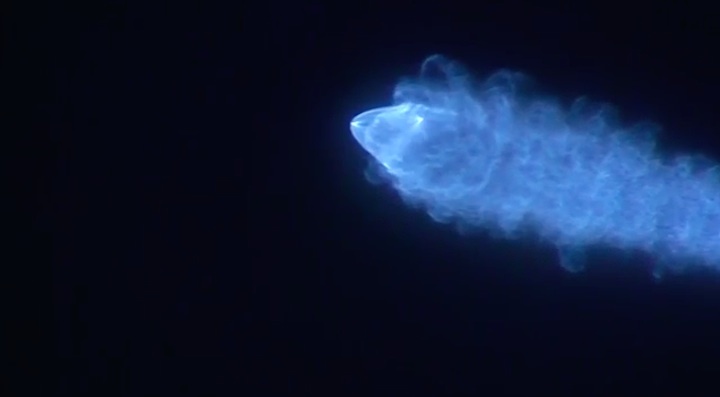
Weather so-so for SpaceX Falcon 9 launch from Cape Canaveral this weekend
SpaceX is on the board to launch a Falcon 9 rocket with a commercial communications satellite from Cape Canaveral Air Force Station this weekend, according to the latest Air Force range schedule.
Teams are targeting 11:28 p.m. Saturday, the opening of a four-hour window, to lift off from Launch Complex 40 and conduct a sea landing on the Port Canaveral-based Of Course I Still Love You drone ship.
Secured inside the rocket's protective payload fairing will be Telstar 18 VANTAGE, a roughly 15,550-pound commercial communications satellite for Canada-based Telesat. The operator expects the satellite reach to China, Mongolia, Southeast Asia and the Pacific Ocean over its 15-year lifespan in geostationary orbit thousands of miles above Earth.
[Air Force's first GPS III satellite arrives for SpaceX launch from Cape Canaveral]
This mission will mark one of the heaviest payloads for SpaceX to date, the heaviest record of which was broken by the 15,600-pound Telstar 19V during its launch from Cape Canaveral on July 22. That satellite became fully operational and entered into service on Aug. 27, Telesat said in a release last week.
Telstar 18V is expected to be the first mission for this Falcon 9 booster, also known by its serial number of B1049. It should return to Port Canaveral for recovery and refurbishment a couple days after landing.
Quelle: Florida Today
---
Update: 6.09.2018
.
Weather so-so for SpaceX Falcon 9 launch from Cape Canaveral this weekend
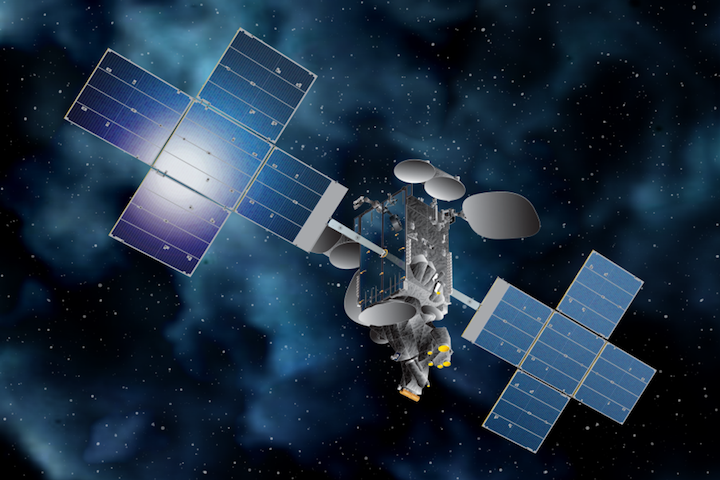
Telesat's Telstar 18 VANTAGE satellite, which was built by SSL in California.
-
Weather conditions are leaning toward mostly favorable for SpaceX's next Falcon 9 launch from the Space Coast and subsequent sea-based landing this weekend, according to Air Force forecasters.
Teams with the 45th Weather Squadron expect 60 percent "go" conditions for the 11:28 p.m. launch on Saturday with the possible presence of thick and cumulus clouds noted as primary concerns. If weather does create obstructions leading up to liftoff, SpaceX has a four-hour window to work around the issues at Cape Canaveral Air Force Station's Launch Complex 40.
On the technical side, SpaceX Wednesday morning confirmed that the rocket had successfully fired its nine Merlin main engines during a brief test at the pad, paving the way for Saturday night's attempt. The checkouts, known as static test fires, are routine for all Falcon 9 missions.
After liftoff and second stage separation, the brand new booster will target an automated descent and landing on the company's Of Course I Still Love You drone ship stationed in the Atlantic Ocean off the coast of Florida. It should return to Port Canaveral for checkouts and refurbishment a couple days later.
Saturday's mission: Deliver Telstar 18 VANTAGE, a spacecraft heavyweight clocking in at 15,560 pounds (7,060 kilograms), to geostationary transfer orbit before it achieves its final altitude thousands of miles above Earth. It will expand Canadian operator Telesat's reach to China, Mongolia, Southeast Asia and the Pacific Ocean over a 15-year lifespan.
The spacecraft will come close, but won't break, SpaceX's previous record of launching a satellite that weighed nearly 15,600 pounds (7,075 kilograms) at liftoff. That record also belongs to Telesat, which contracted SpaceX to launch the Telstar 19V satellite from Cape Canaveral in July. It achieved its final orbit and entered into full-time service in late August, the operator said last week.
Launch Saturday / Sunday
- Rocket: SpaceX Falcon 9
- Mission: Telesat's TELSTAR 18V
- Launch Time: 11:28 p.m. Saturday
- Window: To 3:28 a.m. Sunday (0328 to 0728 UTC)
- Launch Complex: 40 at Cape Canaveral Air Force Station
- Weather: 60 percent "go"
Join floridatoday.com/space for countdown updates and chat at 10:30 p.m. Saturday, including streaming of SpaceX's webcast starting about 15 minutes before liftoff.
Quelle: Florida Today
---
Update: 8.09.2018
.
SpaceX Targeting Sunday Night Launch of Telstar 18V Satellite From Florida
SpaceX is hoping to fly their first mission in a month this weekend from Florida, aiming for a late-night launch from Space Launch Complex (SLC)-40 at Cape Canaveral Air Force Station, Fla. with the heavyweight Telstar 18 Vantage (or “18V”) communications satellite on Sunday evening (Sep 9). Liftoff is scheduled for 11:28 p.m. EDT, at the opening of a four-hour “launch window”, and will mark the fourth outing of SpaceX’s new Block 5 booster, which will roar to space to deploy the satellite towards a geostationary location some 22,300 miles (35,900 km) above Earth.
Quelle: AS
----
Update: 9.09.2018
.
Why all the late-night launches? Get ready for another as SpaceX targets Sunday
Displayed for years in a Kennedy Space Center cubicle, a newspaper letter-to-the-editor registers a complaint that has made the staff of NASA’s Launch Services Program chuckle.
“They were upset that they kept getting woken up by the launches, and wanted to know why NASA couldn’t figure out how to launch in the daytime,” explained Brian Beaver, head of the program’s Flight Dynamics Branch. “’Why am I getting woken up by rockets in the middle of the night?’”
Space Coast residents might be wondering the same thing this summer after a string of late-night, window-rattling blastoffs of both NASA and commercial missions.
The next launch, a SpaceX commercial satellite mission targeted for 11:28 p.m. Sunday, continues the trend as the sixth consecutive liftoff from Cape Canaveral to fall between the hours of 11 p.m. and 6 a.m., when most folks are more concerned with deep sleep than deep space.
But the letter writer and other light sleepers can rest assured, Beaver said, that if launch teams could choose more convenient daytime launch windows, they would.
“We don’t like being up in the middle of the night, either,” he said. “If somebody is launching in the middle of the night, there’s usually a very specific reason.”
The reasons this summer have varied, for missions ranging from an International Space Station cargo run to a solar science probe to commercial satellites lofted high over the equator.
Each mission type has different restrictions that determine their launch windows, and it appears largely coincidental that so many in a row have ended up on the graveyard shift.
“The simple answer is, it’s just worked out that way,” said Beaver, whose office has played a role in two of the recent launches.
For SpaceX’s June 29 launch of a Dragon cargo capsule to the space station for NASA, there was only one time of day when the plane of the station’s orbit crossed the launch site — 5:42 a.m.
A Falcon 9 rocket had to set sail at that moment to put the Dragon on a northeasterly trajectory that could chase down the orbiting laboratory complex for a rendezvous three days later.
If the mission didn't fly at that precise time, it would have had to try again the next day, even earlier.
"To rendezvous with something that's not over the equator, you have a very tight window to launch from, because the launch site has to pass under the orbit of the thing you’re rendezvousing with," explained Marshall Kaplan of Launchspace Services, a training and consulting firm based in Bethesda, Maryland. "It gets complicated pretty quickly."
Anyone who got up early to see that launch was rewarded with one of the prettiest flights of the year, as the first rays of sun caught the rocket's plume with stunning visual effects.

On Aug. 12, United Launch Alliance’s Delta IV Heavy rocket thundered aloft at 3:31 a.m. with NASA’s Parker Solar Probe.
The probe’s path to the sun depended on a flyby of Venus, a trajectory that could only be achieved during roughly one hour each day over a three-week period. Otherwise, the planetary alignments would be off.
The result: a pre-dawn launch by one of the world’s most powerful rockets, whose rumble likely stirred more than a few slumbering residents.
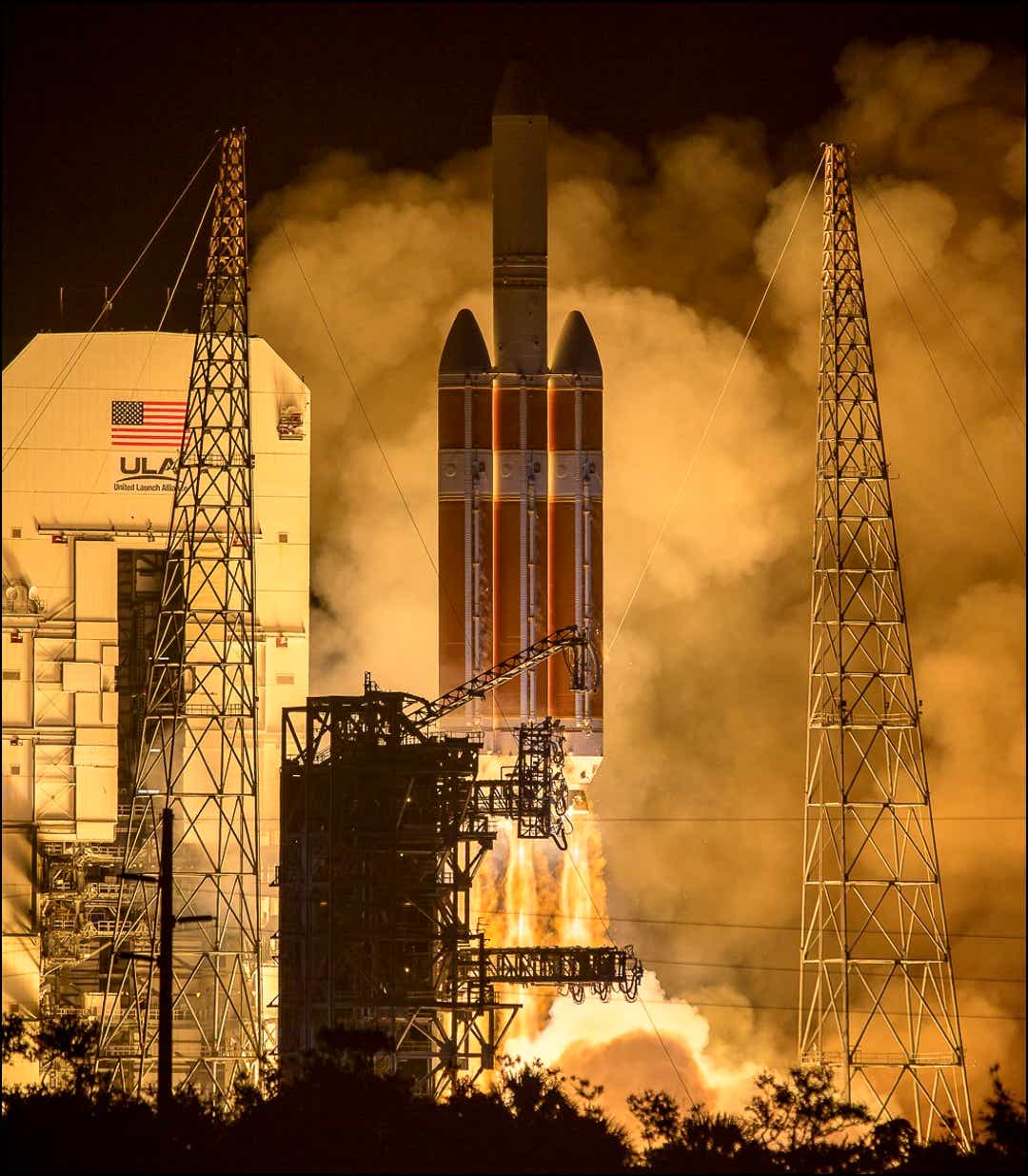
Like Sunday night’s planned launch of the Telstar 18 Vantage mission, several of the recent missions involved boosting commercial communications satellites on their way to orbits 22,300 miles over the equator.
In these “geostationary” orbits, satellites match the speed of Earth’s rotation, and so appear from the ground to hover in fixed points in the sky.
The destination could be reached any time of day, so why shoot them off in the wee hours?
It turns out that the sun’s position — not at launch time, but when the satellite separates from the rocket in orbit — is the driving factor.
Engineers want the spacecraft’s solar arrays to be bathed in sunlight as soon as they are deployed, so that they start generating electricity and the spacecraft become “power positive,” rather than continuing to drain batteries charged before launch.
The satellite’s separation from the rocket about 33 minutes after liftoff is just the beginning of the journey to its final orbit, which must be raised and circularized around the equator. That process could take days or more.
"If the sun is shining on the wrong side of the spacecraft while it’s doing this, it can’t charge its batteries," said Kaplan.

Launch windows for communications satellites may last several hours, offering much more flexibility than an instantaneous space station window or limited planetary opportunities. But lining up the correct sun angle may require launching overnight.
For these missions, it's possible more than one time of day could work.
Then weather and other factors, like range availability, might become considerations.
A silver lining of the recent spate of late launches is the lower odds of thunderstorms so common during Florida summer afternoons and evenings.
"In the summertime here in Florida, 3:33 p.m. is very bad, and 3:33 a.m. is very good," said Kathy Rice of the Air Force's 45th Weather Squadron, before the solar probe's first launch attempt. "We do expect to see these afternoon thunderstorms each day, but as the day goes on and as we get into the evening, they’ll dissipate."
The calculations defining launch windows can get much more complex for some missions.
For example, while engineers want sunlight to hit a satellite's solar arrays at the right time, they may want cameras, sensors or instruments shielded from light and heat, at least until the satellite can control their cooling or turn itself away from the sun.
A sensitive period during launches often is the long coast in a low “parking” orbit between burns by a rocket’s upper-stage engine. The launch time must factor in the sun's effects throughout the entire flight.
"You’re trying to balance a collection of constraints that all come down to launch time, and so you end up very quickly narrowing in on a specific time of day," said Beaver.
Conditions on the ground may determine when a long window ends. A rocket’s super-cold fuel or oxidizer, which boils off throughout a countdown, can only be replenished for so long before tanks must be drained for a later attempt. Engineers can only stay on console for so long before needing rest.
The end of summer won’t mean an end to overnight launches.
Two missions scheduled in October have windows opening at 4 a.m. and around midnight.
The former features an air-launched rocket that will be dropped at altitude over the ocean, an event that will keep NASA’s Launch Services Program team up all night but shouldn't disturb snoozing Space Coasters.
Before then, another NASA science mission will depart from California before sunrise local time.
“That’s tough on everybody,” said Beaver. “If there’s a way to avoid it, we’ll do it, frankly. It’s usually because that’s only way we can do the mission.”
Quelle: Florida Today
+++
Update: 10.09.2018
.
Erfolgreicher Start von SpaceX Falcon-9 mit TELSTAR 18V Satelliten
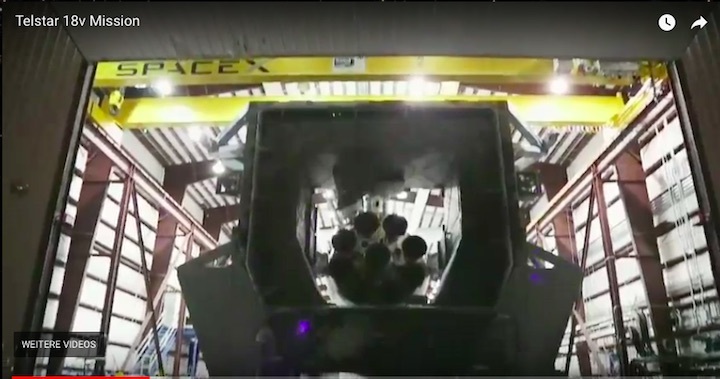
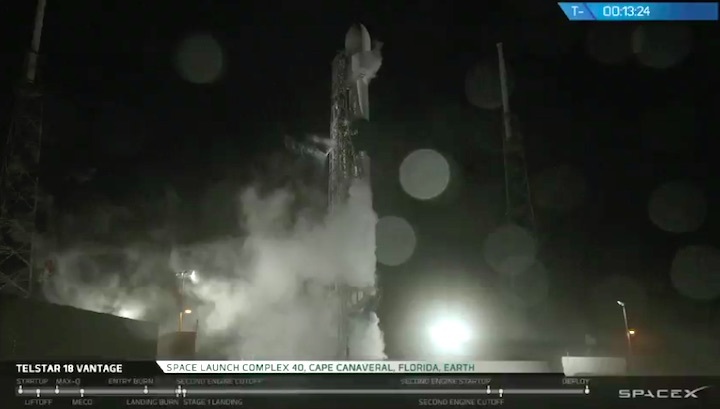
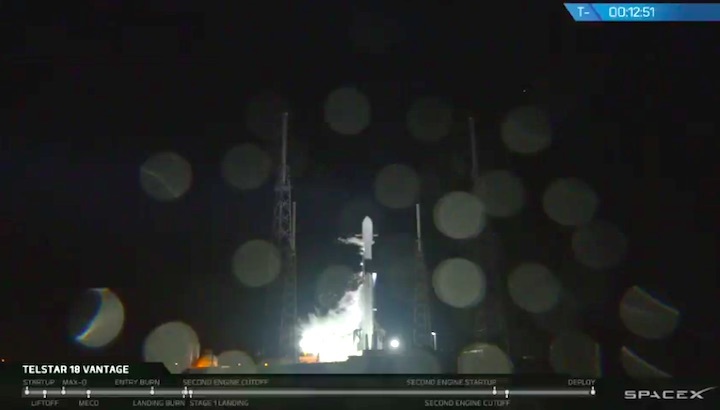
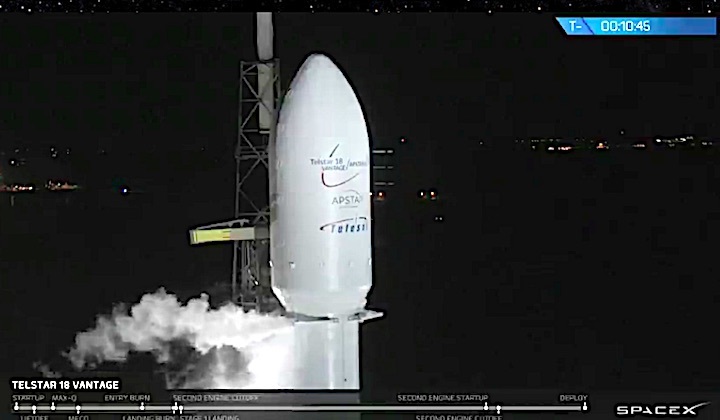
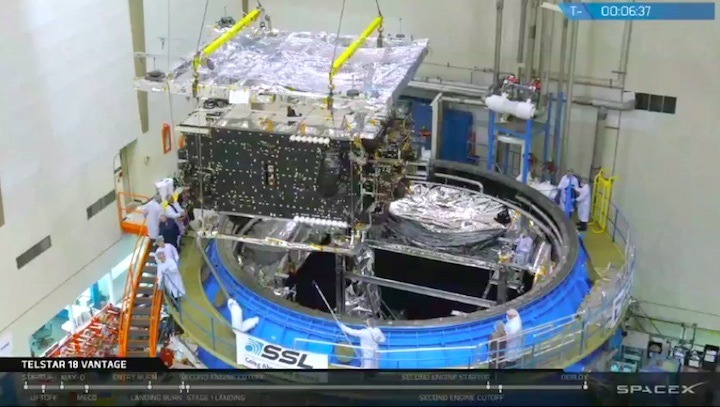
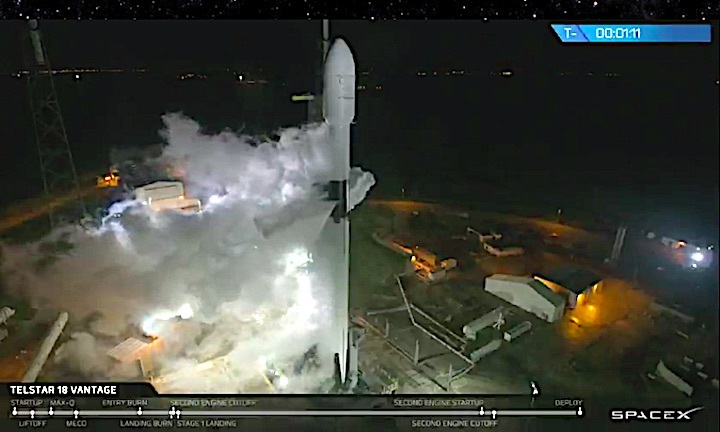
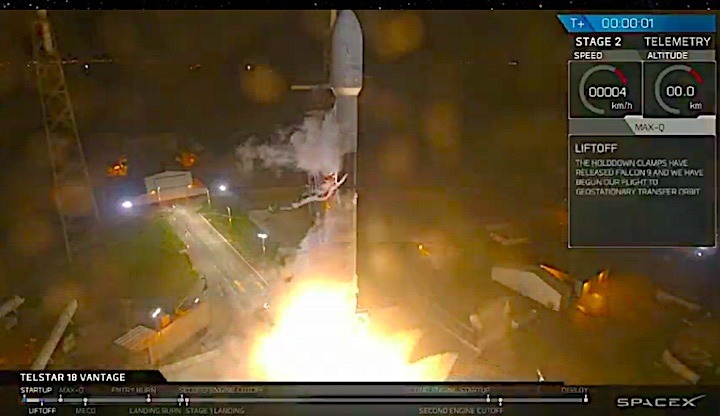
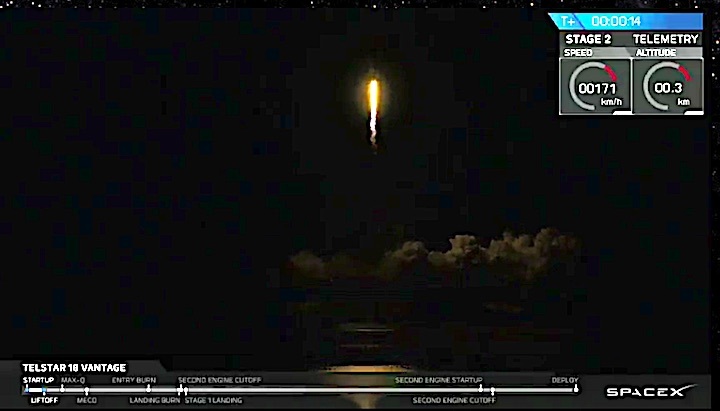
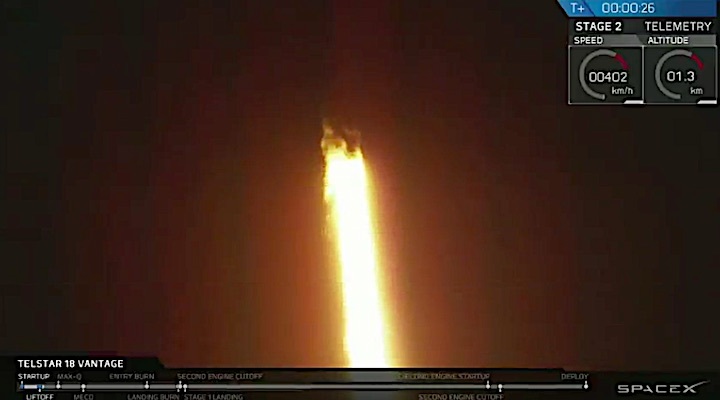
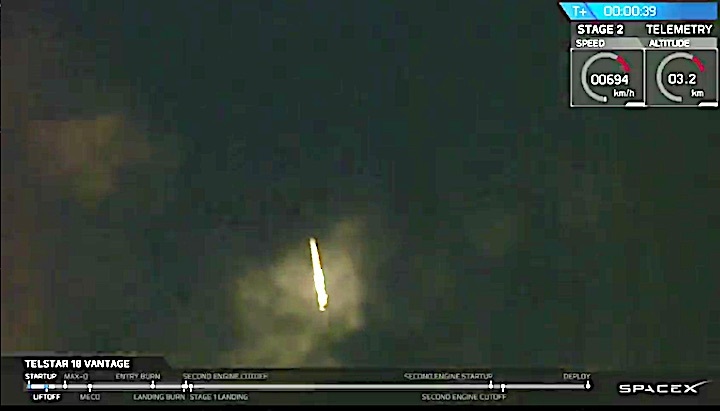
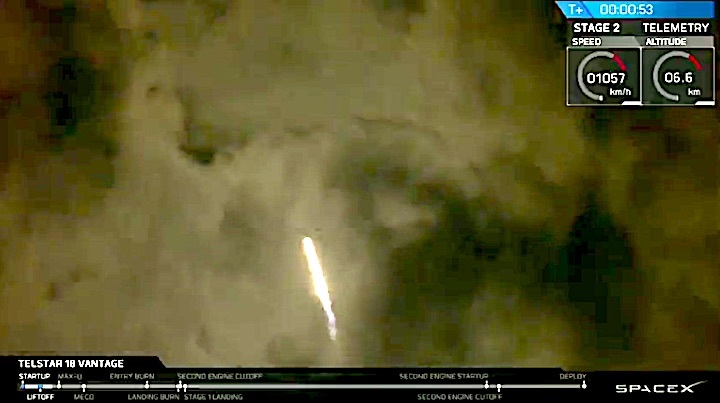
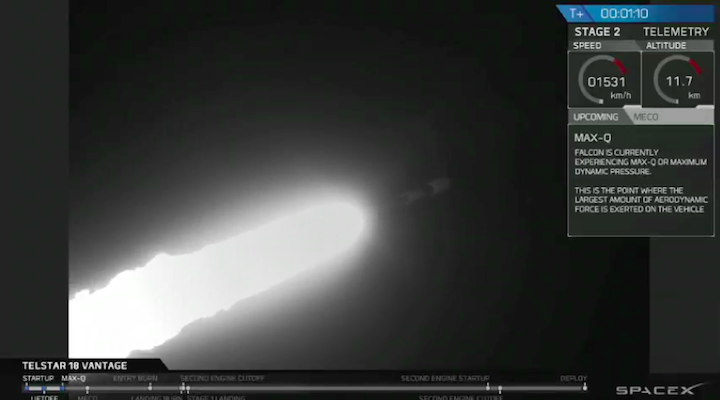
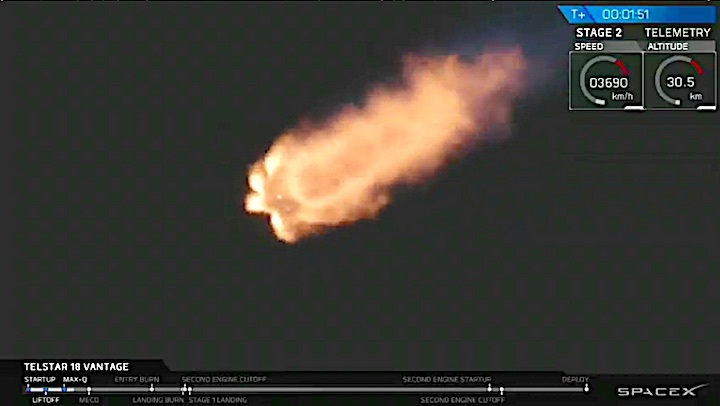
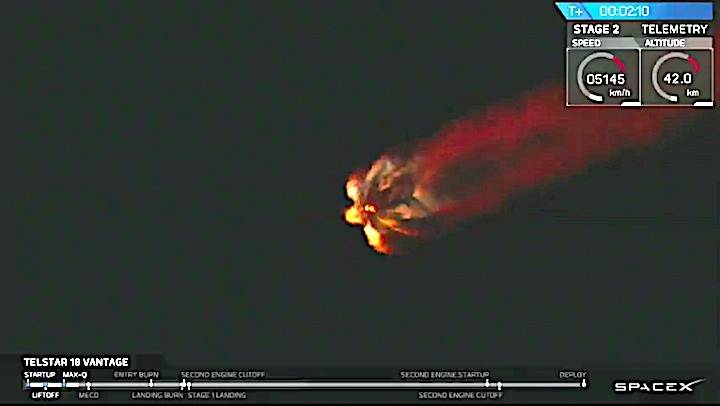
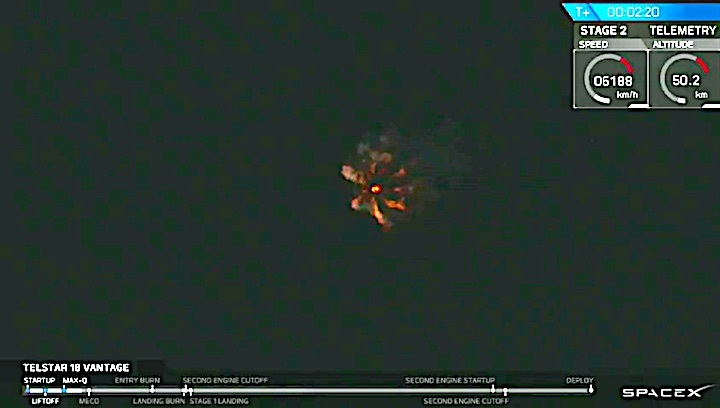
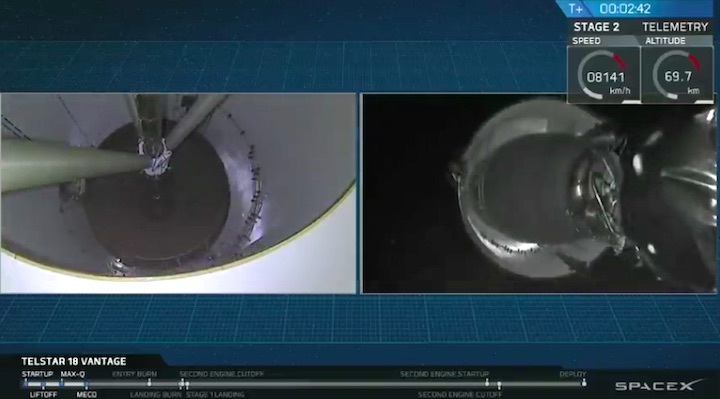
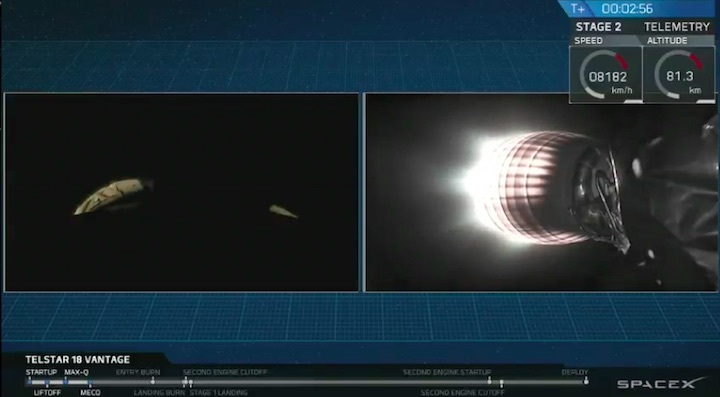
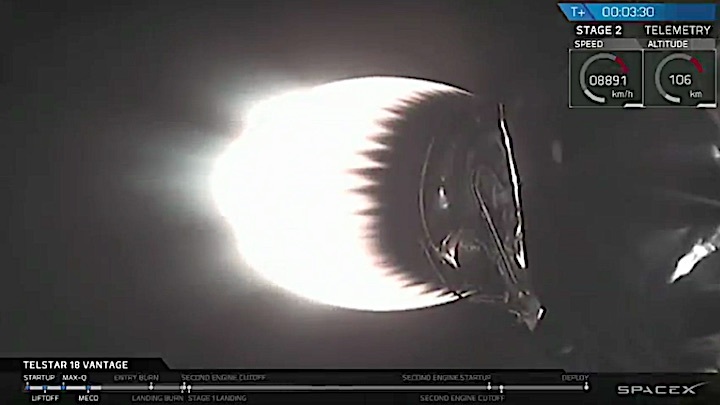
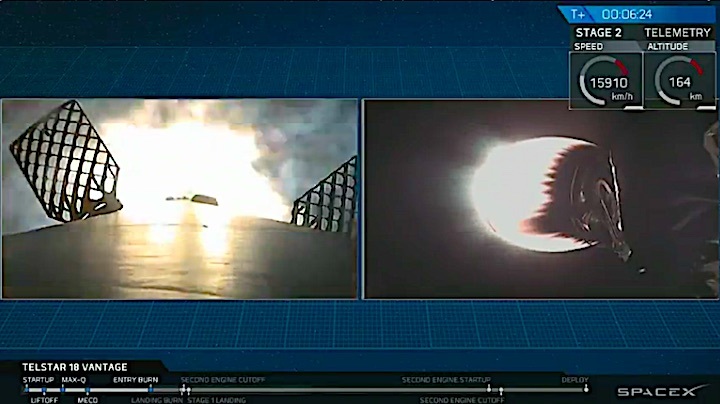

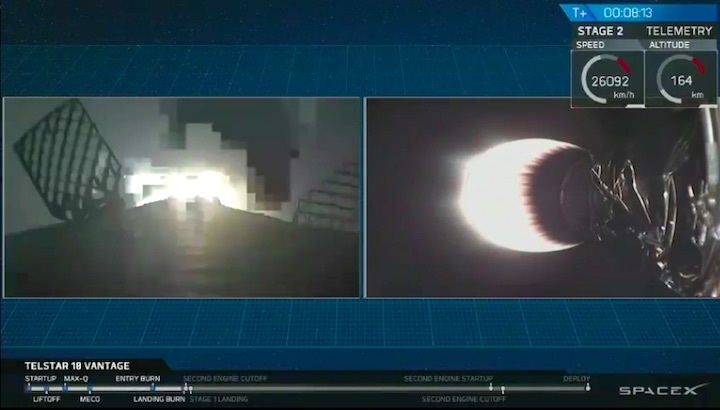
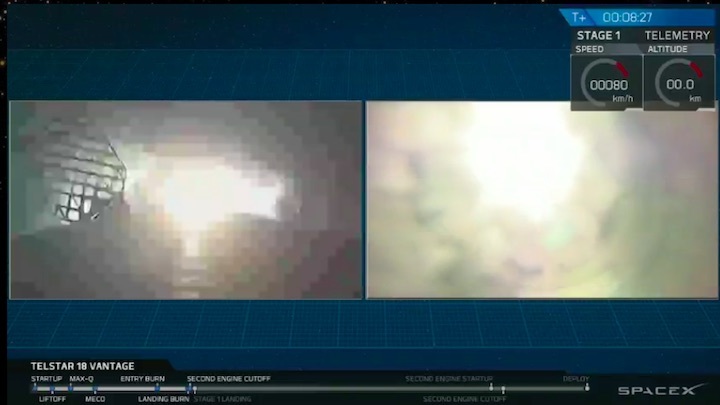
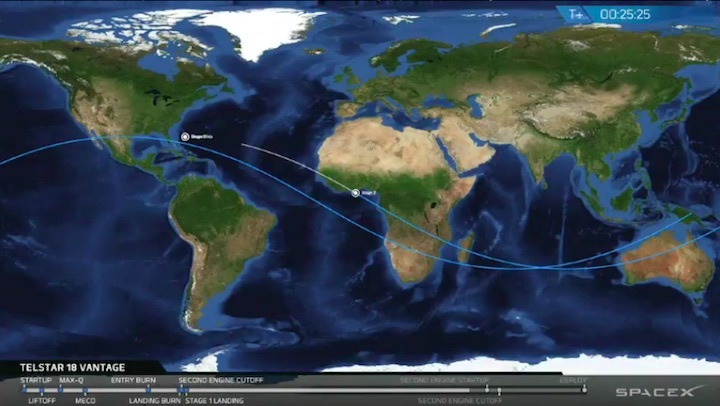
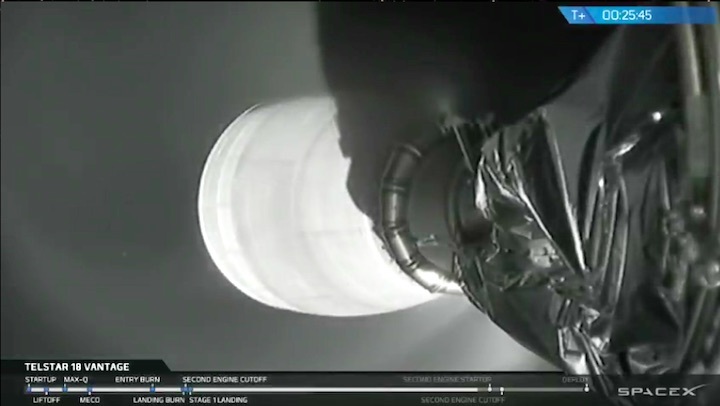
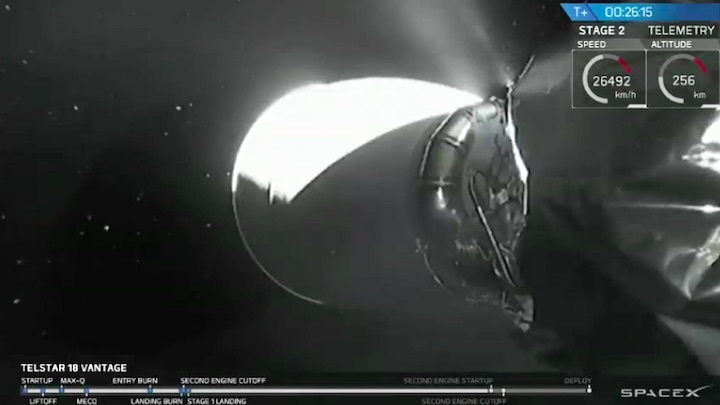
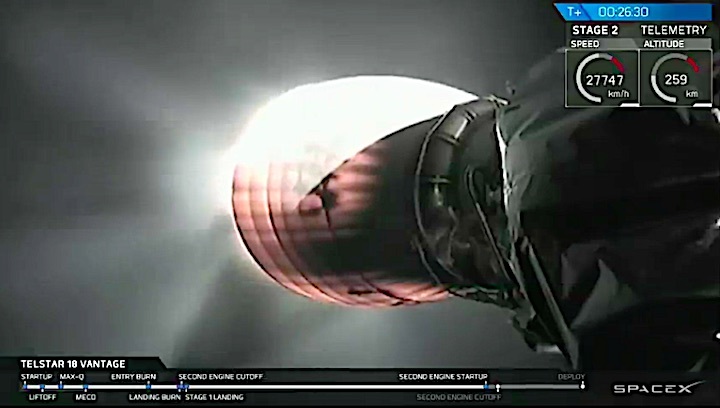
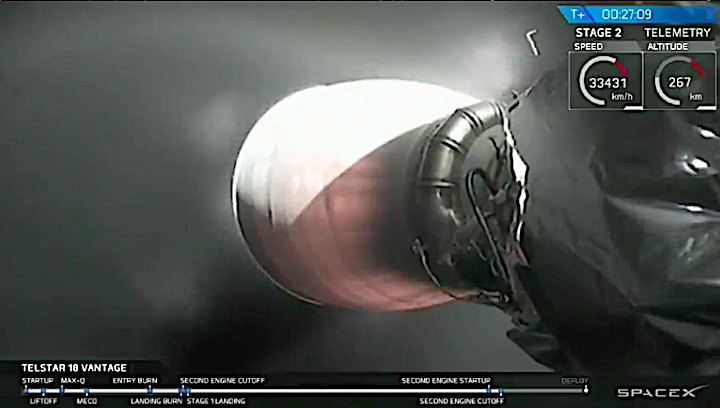
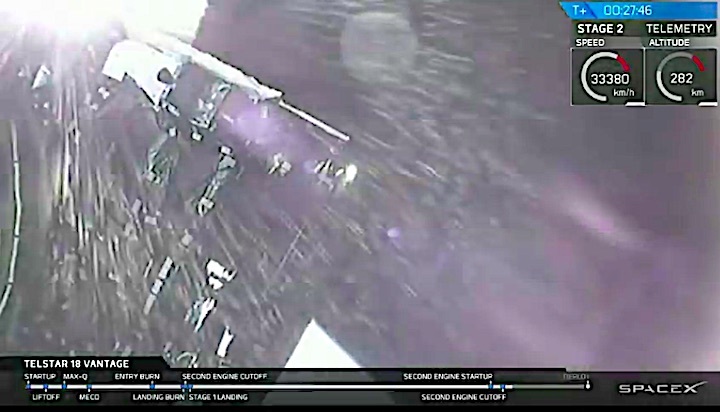
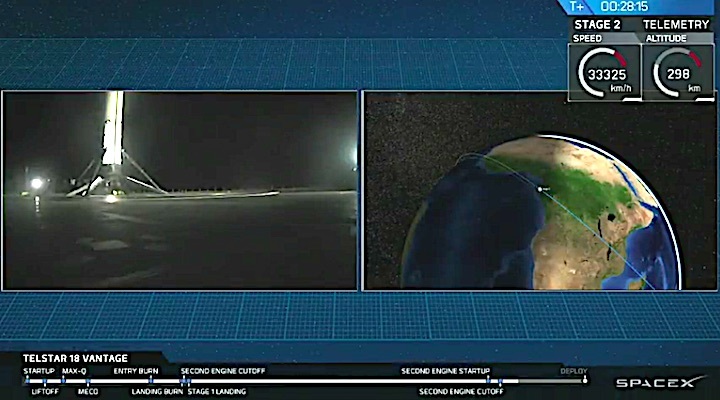

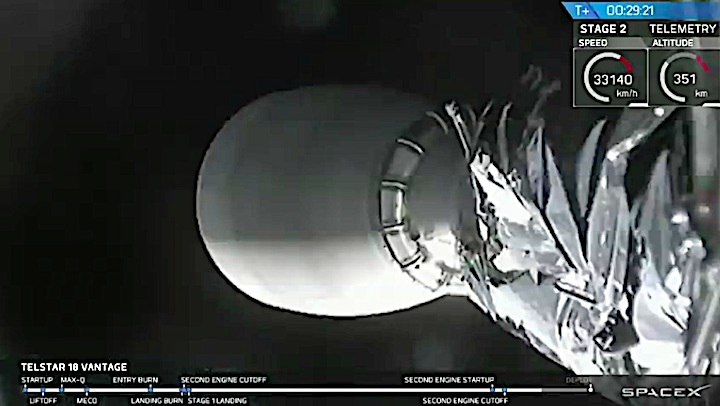
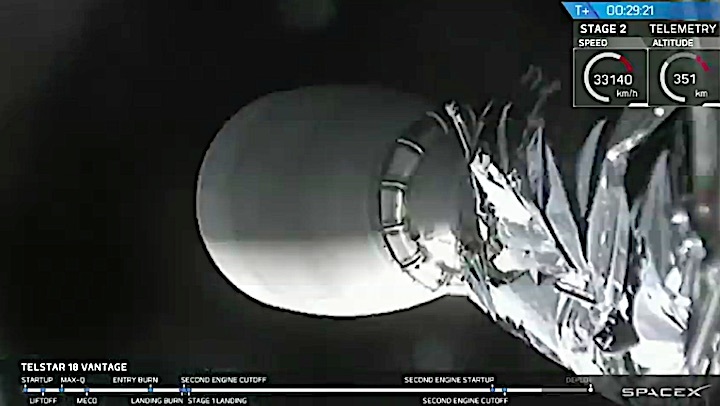
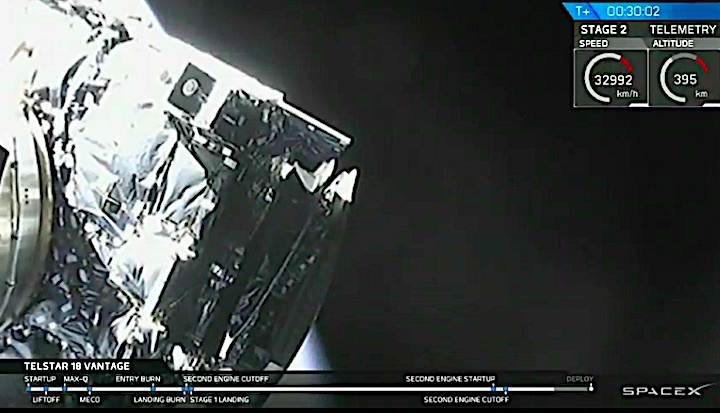
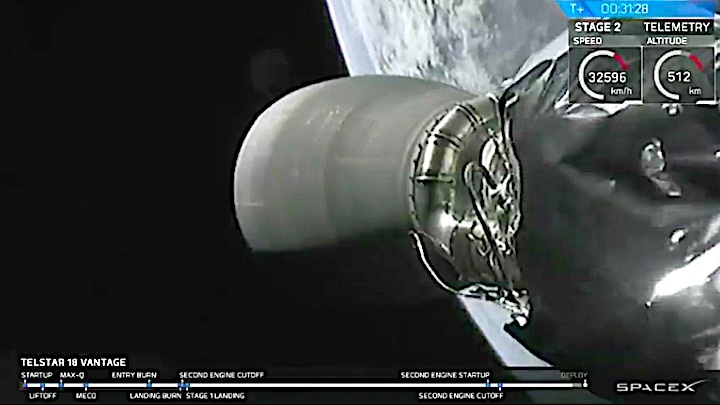
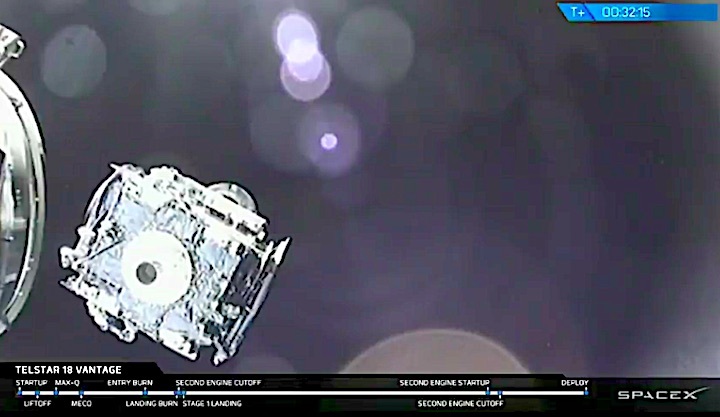
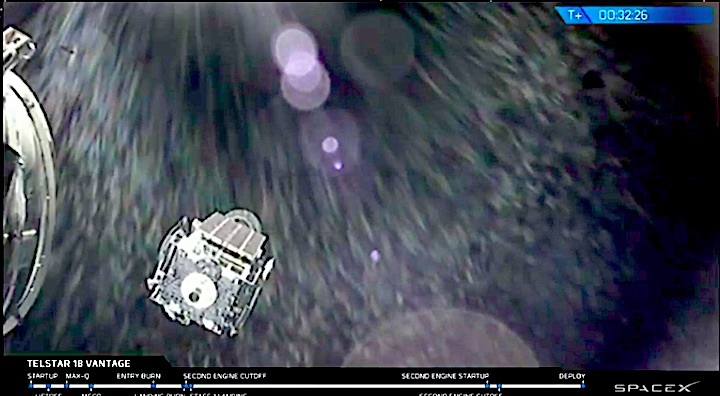
Quelle: SpaceX
